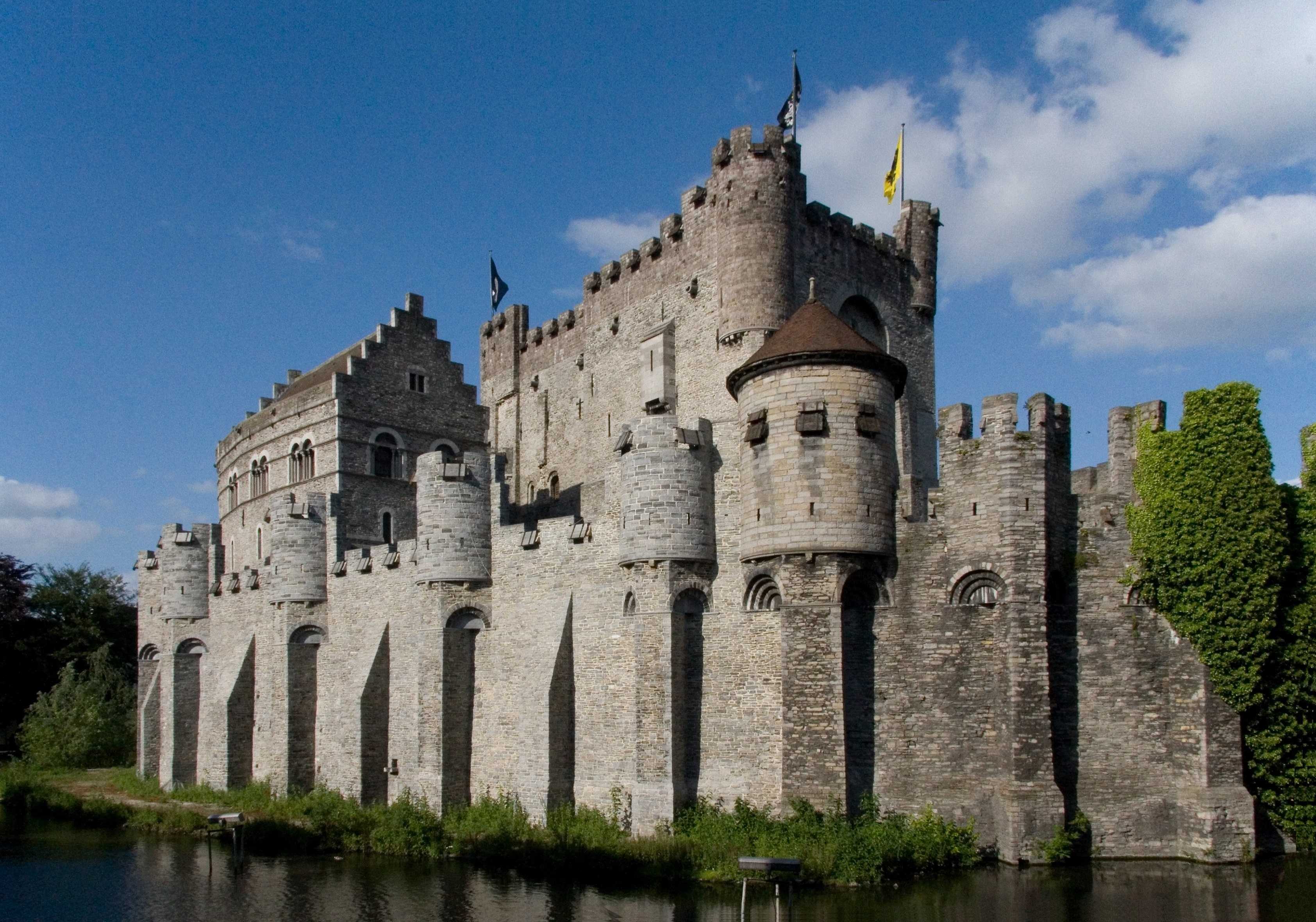The Gravensteen is a medieval castle at Ghent, in Belgium, now transformed into a museum.
The site, which sat between two branches of the Lys river, was first fortified around 1000, initially in wood and later in stone. This was soon transformed into a motte-and-bailey castle which burnt down in around 1176.
The current castle dates to 1180 and was built by Philip of Alsace (1143–1191) on the site of the older fortification.
As well a protective citadel, the Gravensteen was intended to intimidate the burghers of Ghent who often challenged the counts' authority. It incorporates a large central donjon, a residence and various smaller buildings. These are surrounded by a fortified, oval-shaped enceinte lined with 24 small échauguettes. It also has a sizeable moat, fed with water from the Lys.
The castle was the residence of the Counts of Flanders until 1353. It was subsequently re-purposed as a court, prison, mint, and even as a cotton factory.
It was restored over 1893–1903 and is now a museum and a major landmark in the city.
Gravensteen
Sint-Veerleplein 11, 9000 Gent, Belgium

- Monday:
-
10:00 - 18:00
- Tuesday:
-
10:00 - 18:00
- Wednesday:
-
10:00 - 18:00
- Thursday:
-
10:00 - 18:00
- Friday:
-
10:00 - 18:00
- Saturday:
-
10:00 - 18:00
- Sunday:
-
10:00 - 18:00







